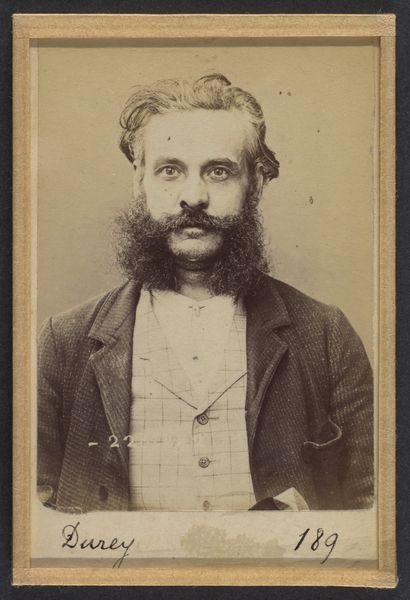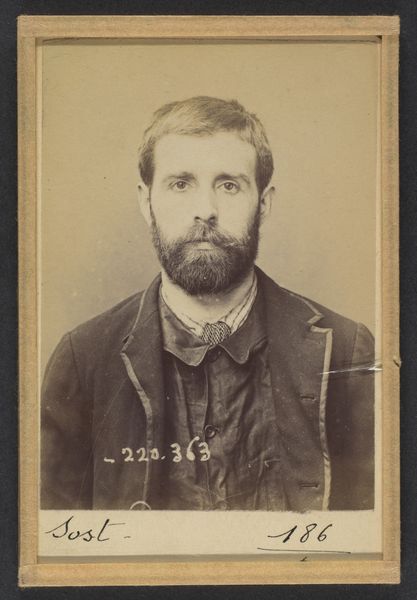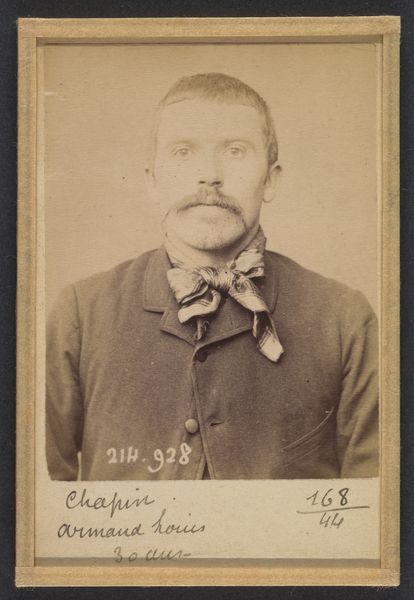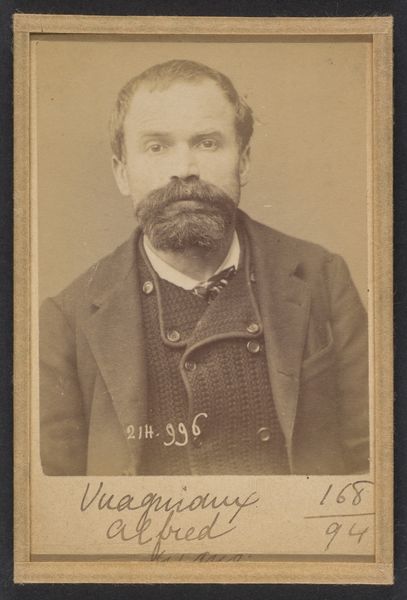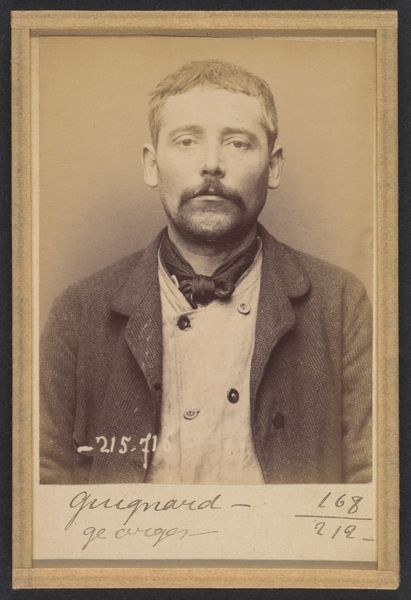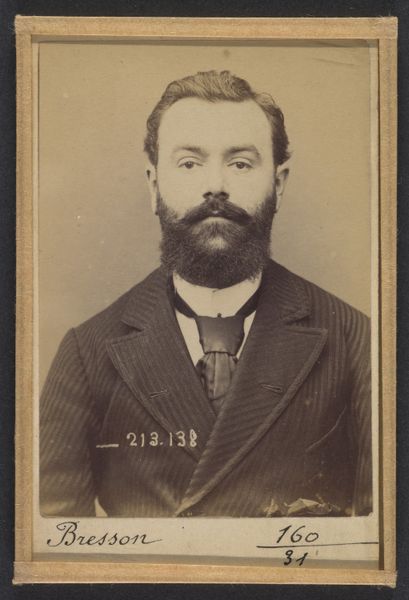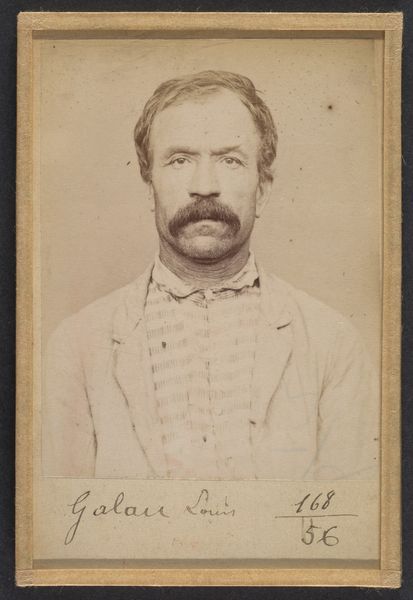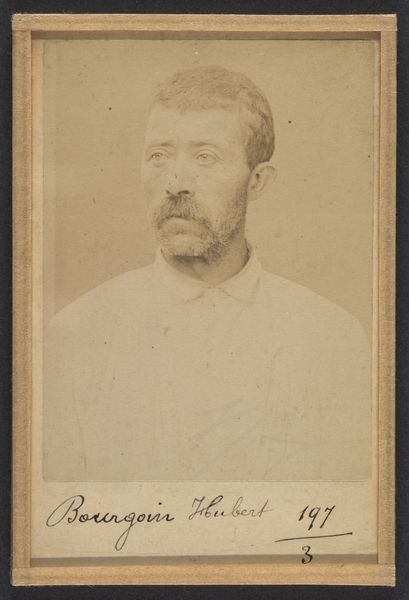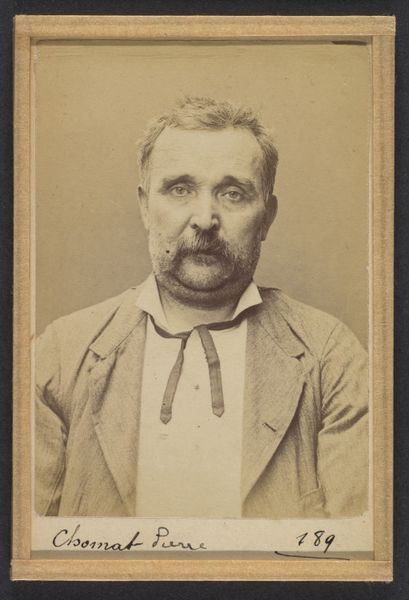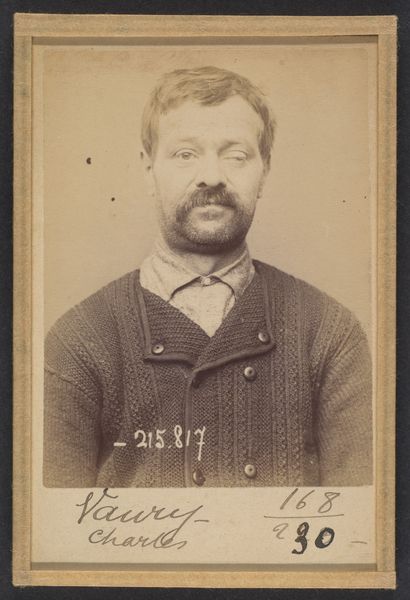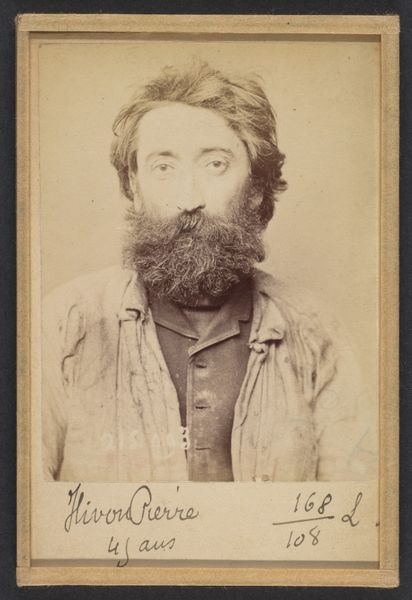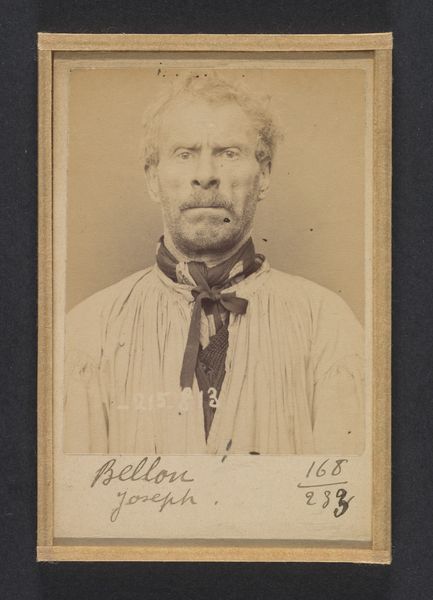
Vidal. Guillaume. 37 ans, né à Tellière (Puy de Dôme). Cocher. Anarchiste. 10/3/94. 1894
0:00
0:00
photography, gelatin-silver-print
#
portrait
#
self-portrait
#
photography
#
gelatin-silver-print
#
men
#
academic-art
#
realism
Dimensions: 10.5 x 7 x 0.5 cm (4 1/8 x 2 3/4 x 3/16 in.) each
Copyright: Public Domain
Editor: This gelatin-silver print by Alphonse Bertillon, created in 1894, is titled "Vidal. Guillaume. 37 ans, né à Tellière (Puy de Dôme). Cocher. Anarchiste. 10/3/94." It strikes me as a very direct and somewhat unsettling portrait. The man's gaze is so intense. What do you see in this piece? Curator: The intensity you observe is key. This isn't simply a portrait; it’s a specimen, part of Bertillon’s pioneering work in forensic photography. Note how the text below, a seemingly simple label, becomes a powerful signifier of identity reduced to data: name, age, birthplace, profession, and ideology all carefully noted. Consider how that very meticulousness reflects a society grappling with anxieties around criminality and social order. The image seeks to classify, to control. Does the subject’s self-presentation push against or conform to those social objectives? Editor: That's fascinating! The starkness of the photograph definitely lends itself to that interpretation. So, you see this image as reflecting societal anxieties of the time? Curator: Absolutely. Bertillon’s images are a manifestation of those anxieties, visually encoding the fear of the "other," the "criminal type," within a seemingly objective medium. But let’s consider also, the symbols that are NOT overtly present. Vidal’s social standing is reflected through the clothes and personal details – is it possible to determine that this way of portraying his “character” influences our modern biases as well? Editor: So, beyond just a photographic document, it’s almost like a symbolic inventory of a person in the late 19th century. It's fascinating to consider how this one image connects to larger societal themes. Curator: Precisely. Understanding this portrait requires us to delve into the complex interplay of individual identity, social control, and the cultural power of visual representation. By unraveling the symbolic layers, we gain a richer understanding of both the historical context and our own contemporary perspectives on identity and representation. Editor: Thank you! That gives me a lot to consider about the cultural weight of these types of portraits.
Comments
No comments
Be the first to comment and join the conversation on the ultimate creative platform.
